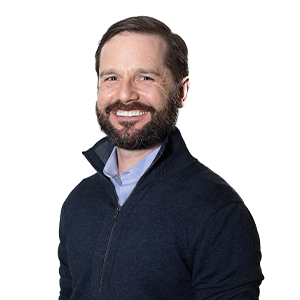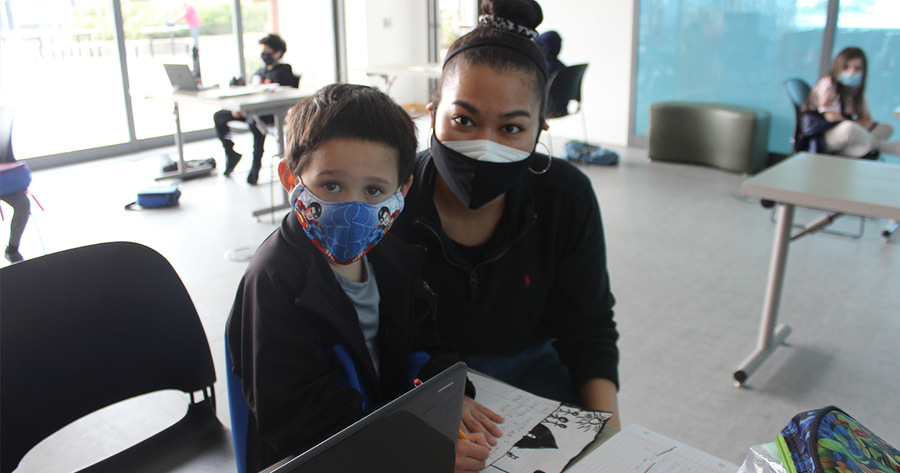Yet the pandemic also produced inspirational stories of people coming together to care for our most vulnerable children. One example, which we describe in the report Showing Up While Everything Is Shutting Down: A Story of Cooperation in San Francisco was the courageous, collaborative effort of San Francisco's Community Hubs Initiative.
From March 2020 to April 2021, the San Francisco Unified School District (SFUSD) closed its buildings and offered instruction remotely. During this time, the "Hubs" provided in-person support for 2,509 of San Francisco's most vulnerable children: those who were underhoused or experiencing homelessness, in the foster care system, living in public housing, English Language Learners, or in families that were low-income. The Hubs helped children access their school's remote instruction as well as provided physical recreation and peer interactions. For many of those children, the Hubs provided the only available source of academic and social-emotional support.
To succeed, the Hubs required a vast multi-stakeholder collaboration, and their story offers a case study of how systems should work together. The coalition included 119 organizations: San Francisco City departments, community-based organizations (CBOs), philanthropies, and businesses, all of which worked together under a shared vision. SFUSD also made essential contributions, from teachers who offered remote instruction (without which the Hubs couldn't exist) to staff who provided technology support.
At the center of the Hubs were 563 youth development professionals, providing direct service to children.
While teachers were often recognized for their extraordinary efforts during the pandemic, the Hubs highlight the critical roles played by youth development professionals. As Sherrice Dorsey-Smith, Deputy Director at San Francisco's Department of Children, Youth and their Families, noted:
"Without youth development professionals, there would be no Hubs. No other group had the expertise, skills, and knowledge to pull this off."
These professionals gave almost 3,000 students a chance to avoid significant academic, physical and mental declines. What's more, youth development professionals enabled parents—many of whom were front line or essential workers—to keep their jobs and regain some emotional strength.

Youth development professionals in San Francisco—and across the country—showed up in a number of ways.
First, they showed up when they were needed most. At the beginning of the pandemic, Americans in almost every profession expressed anxiety about returning to in-person work—youth development professionals were no different. Nevertheless, almost immediately after schools shut their doors in March 2020, these professionals put children first by providing in-person support services.
Second, youth development professionals' unique skills met the moment. Without in-person school, many children's emotional and physical health suffered. These children needed more than academic learning: they needed a counselor, a coach, a friend, and a playmate. Children needed someone to look them in the eye, recognize their pain, and offer an individualized human touch.
Third, Hub staff were racially diverse and likely to reflect the demographics of the students they served, with long-standing roots and relationships in those communities. This helped them create personal connections with children and their families—connections that were essential in a traumatic period. Families we interviewed spoke emotionally about the personal care that staff showed for them and their children.
Not only did San Francisco's youth development professionals support these children when it mattered most, but the Hubs also showed what's possible when different systems work together. Unfortunately, systems—such as youth development and public education—are often disconnected, to the detriment of children. The Hubs began to change that.
"Before the pandemic, CBOs were knocking on school doors, saying, 'Let me in, we want to help the schools,'" explained Dorsey-Smith. "Now we have principals blowing up the CBOs' phones saying, 'How can we work together?'
"We are starting to see the wall crumble. Schools are starting to see the added value that CBOs (and youth development professionals) bring to their schools."
Going forward, many San Franciscans hope this kind of collaboration on behalf of children continues, and that youth development professionals will garner more respect and financial investment. Maria Su, Executive Director of the Department of Children, Youth and their Families says, "I envision a relationship (between CBOs and the school district) that is truly collaborative, where children would not be able to distinguish a (youth development professional) from a teacher—where all these adults are caring adults who are there to support children." The city is optimistic about what is possible in the years ahead.
Showing Up While Everything Is Shutting Down: A Story of Cooperation in San Francisco was sponsored by the San Francisco Education Fund. Click here to read the full case study and view videos about the Hubs, including Youth Development Professionals: Essential Workers of the Hubs.
 David Phillips is the co-author of Showing Up While Everything Is Shutting Down: A Story of Cooperation in San Francisco and Founder of Panorama Advisors, where he supports clients to build equity-centered teams, create strategies that work, and bring those strategies to life.
David Phillips is the co-author of Showing Up While Everything Is Shutting Down: A Story of Cooperation in San Francisco and Founder of Panorama Advisors, where he supports clients to build equity-centered teams, create strategies that work, and bring those strategies to life.
Photos courtesy of David Phillips.

